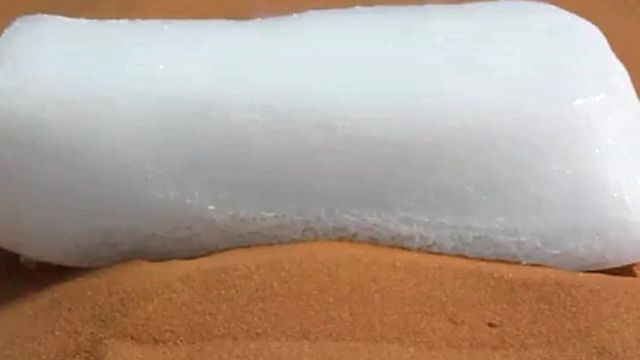Dry ice snowboarding on Mars
This week, NASA's Jet Propulsion Laboratory released images from the Mars Reconnaissance Orbiter (MRO) of curious tracks along sand dunes in Mars' southern hemisphere. New research shows the tracks are created by chunks of dry ice sliding down the slope on a cushion of carbon dioxide gas. These blocks, some as wide as several yards or meters, are formed by build-up of carbon-dioxide frost each winter.
Posted — UpdatedThe research team tested a new hypothesis of how these tracks were created in the deserts of California and Utah. The team raced ordinary blocks of dry ice available at grocery stores, wood and water ice. The wood blocks moved only a few inches. Water ice slowed to a stop by wet sand. The dry ice block skittered quickly along even shallow slopes. The thawing ice on the warmer sand provided a long hovercraft-like ride. That layer of carbon dioxide gas also helped push sand aside, plowing a shallow, consistent grove.
Flowing water can leave similar paths both here on Earth and on Mars. Water tends to carry debris, depositing it at the bottom of the slope.
However, the MRO images show no debris, only pits at the bottom of the tracks. The desert tests also showed that each dry ice chunk sublimates away, leaving only a disturbance of the sand beneath as it converts directly from solid to gas.
"I have always dreamed of going to Mars," said planetary scientist Serina Diniega, "Now I dream of snowboarding down a Martian sand dune on a block of dry ice."
Sounds like an activity for my next trip to Jockey's Ridge State Park on the Outer Banks.
Copyright 2024 by Capitol Broadcasting Company. All rights reserved. This material may not be published, broadcast, rewritten or redistributed.





